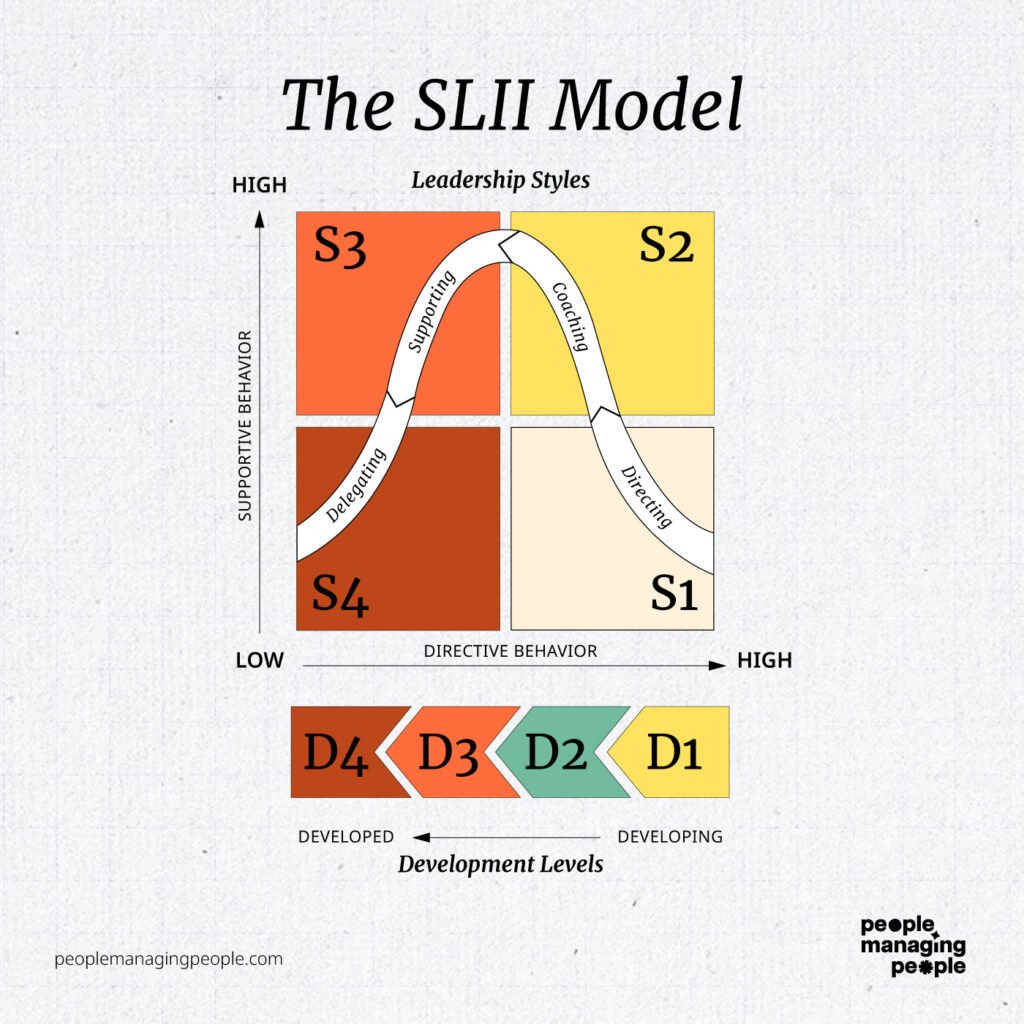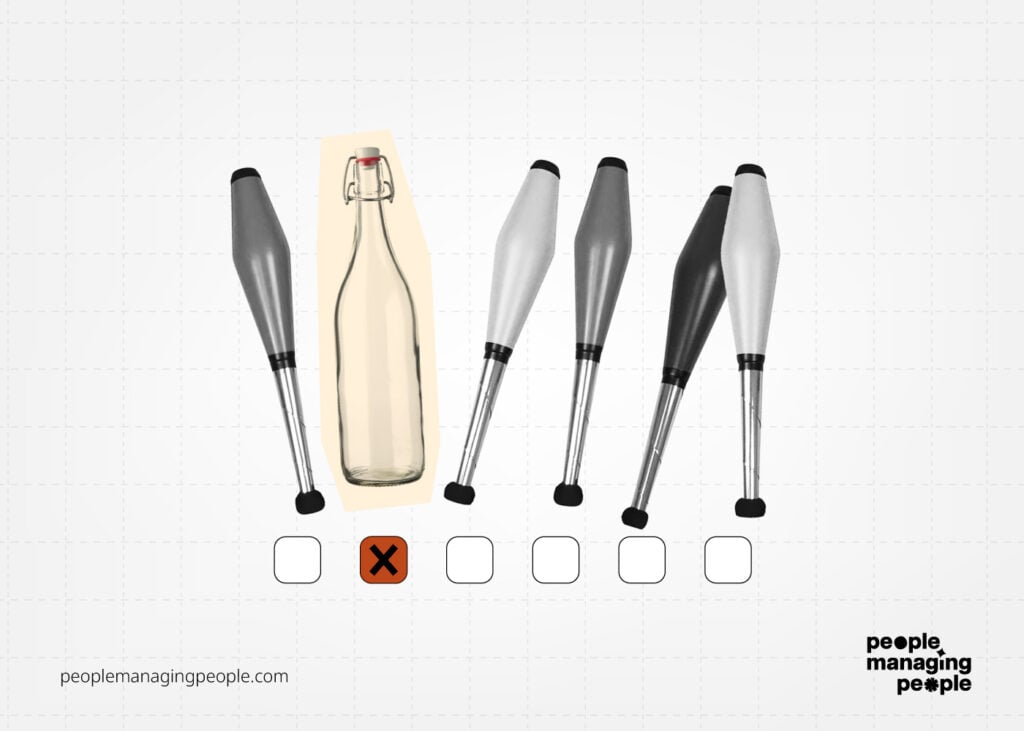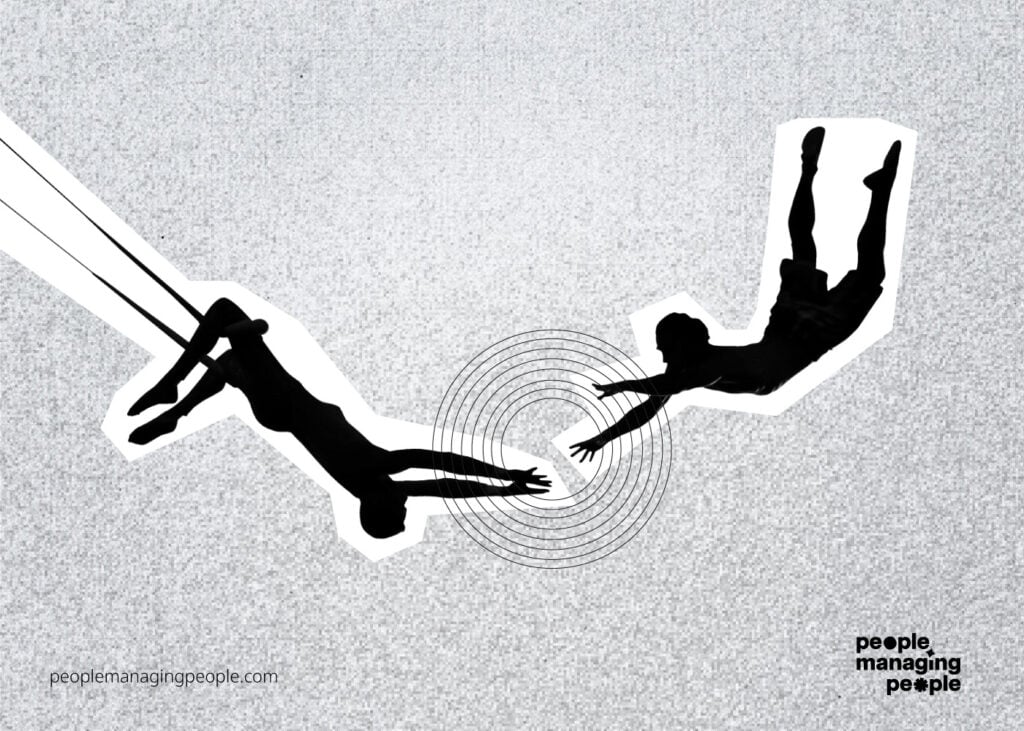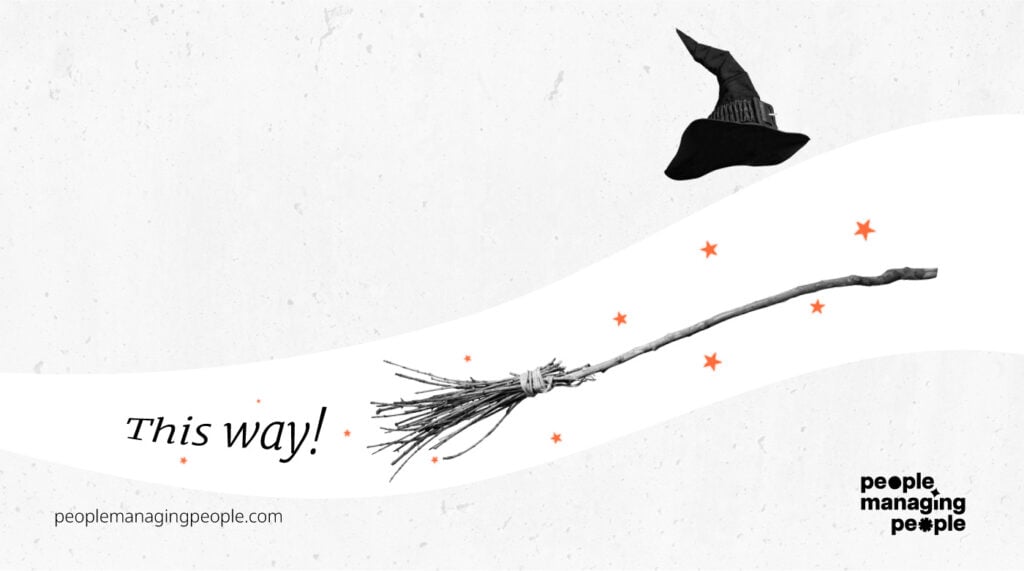People management is a critical skill for any manager. Whether you are new to the role or have been managing people for years, mastering this skill will positively impact employee engagement and productivity.
When I think about my own career, there are a few key people managers that stand out. They're the ones who my colleagues and I felt genuinely cared for by, and who never told me I couldn’t do something. Instead, they encouraged me to try.
Now, after 15 years of management experience across industries, contexts, and job functions, I'll share the basics of people management, a few different people management styles, and tips to become an effective people manager, at any level.
I’ll cover:
What Is People Management?
People management is the process of ensuring that the right people are in the right place, with the right resources, to achieve the desired goals. This includes recruiting, training, and developing your team members.
Why is people management important?
Management makes a huge difference in the experience of every employee across the employee lifecycle. Management behaviors and styles have a significant impact on employee performance, engagement, productivity, and retention, especially when navigating change.
There is a lot of overlap between people management and leadership, and typically speaking, good leaders are also good managers. However, there are some key differences. These include:
- Leaders often have more of a strategic role and vision, while managers are more focused on day-to-day operations
- Leaders coach people to improve themselves and reach personal goals, while managers direct people to achieve the company goal
- Leaders tend to challenge the status quo, whereas managers try to achieve or maintain the status quo consistently
- Leadership is qualitative and the results are intangible, while management is quantitative and the results are measurable
Getting into people management
The qualities of a good people manager can be somewhat elusive. We all want to be led by someone who is competent, confident, and decisive, but how do you get to that person? And what does it take to stay in that role?
My students are often aspiring people managers or have just started having people report to them. In most cases, these people have a deep care for their employees and are hungry to learn how to serve them best.
The authenticity in their care is what matters most in their early days and, from there, we add skills and awareness to create really strong, supportive, and empathetic people managers.
People Management Styles
There are a few notable styles to consider when evaluating your people management techniques to manage them in a way that promotes performance, employee retention, and a positive employee experience.
People management styles can be broken down into four categories:
- Directive
- Coaching
- Supportive
- Delegative

Directive people management
With directive people management, the manager tells employees what to do and how to do it. This style is most effective when tasks need to be completed quickly and efficiently to a specific standard or requirement, or when employees are early in their development and need more guidance.
That said, there is a huge difference between directing an employee and micromanaging them. If you find yourself micromanaging or contradicting work or decisions because they aren’t what you would have done, reflect to identify your true fears. Then, build opportunities for your employees to demonstrate competence, build confidence, and create trust.

Coaching people management
In this situation, managers provide clear, specific direction and support employees in achieving the desired outcomes. This style is effective to help people learn specific behaviors and cultural norms such that, in the future, the manager might be able to be more supportive and less directive.
The coaching style is helpful in developing specific behaviors in highly competent employees adjusting to a new organizational culture or context.
Supportive people management
The manager provides guidance and support to employees but allows them to make their own decisions, including guiding outcomes.
This style is often more positive for employees and can lead to better results where there might be many "right answers" and employees are experienced and competent in creating a positive outcome in the specific context or organization.
Delegative people management
The manager gives employees autonomy to make their own decisions with little support or involvement.
The delegative style can be helpful in developing employee skills and is typically best for highly developed employees who deeply understand the context, culture, and goals of the organization.
No one-style-fits-all approach
Even within a team, employees of various development levels may be managed or led best using different styles. The best people managers are skilled in identifying which styles are the best fit for individuals and teams.

For example, in my experience managing project managers, I find that new employees need more direction at the outset as they learn the context, culture, expectations, team norms, and norms of the company.
During this stage of their development, I often have the new employees join me in collaborating to solve a problem or deliver an outcome. Later, I start assigning them projects to own where I can move into a coaching style. As they grow in their experience and competence, my approach becomes more supportive and, later, delegative.
As you move forward in determining what type of people management style is best for each of your employees, consider their experience and development or maturity in their role and solicit feedback about your management. This will help you know if they need more support or direction from you to do their best work.
What Are The Tasks Required Of A Manager?
Being a people manager includes the following tasks, many of which are key to the employee lifecycle:
- Hiring and interviewing
- Onboarding and training
- Assigning and evaluating work
- Career development and training
- Performance management
- Employee recognition and rewards
- Offboarding.

In addition to these tasks, a people manager plays a crucial role in creating a positive and inclusive work environment by actively listening to employee concerns, mediating conflicts, and promoting a culture of respect.
To excel in these managerial tasks, it's important to prioritize effective communication and continuous learning. Regularly schedule one-on-one meetings to give and receive employee feedback, and stay on top of the latest industry trends and techniques through workshops, training, and management certifications.
What Skills Are Required For People Management?
People management requires a combination of skills and abilities that focus on supporting employees and managing performance, outcomes, and resource allocation.
A few key skills that come to mind specifically include:
- Sourcing, interviewing, and onboarding employees to ensure the selection and integration of the right talent for organizational success.
- Building trust and maintaining trusting relationships to create a positive and collaborative work environment.
- Active listening and communicating clearly to enable understanding, resolve conflicts, and ensure team collaboration and alignment.
- Giving specific, timely feedback to guide and motivate employees, helping them grow and improve their performance effectively.
- Identifying people’s strengths and core competencies for the optimal use of talent, enhancing team performance and job satisfaction.
- Distributing and delegating work for efficient task allocation, empowered employees, and a balanced work environment.
- Setting clear expectations to provide direction, align team efforts, and set a standard for performance and accountability.
- Motivating employees to help drive engagement, boost morale, and enhance productivity and job satisfaction.
- Collaborating in problem-solving to leverage diverse perspectives and expertise, leading to more innovative and effective solutions.
- Encouraging development and learning from failure to foster a growth mindset, resilience, and continuous improvement among employees.
- Celebrating successes to recognize achievements, boost team and individual morale, and reinforce positive behaviors and team unity.
8 Tips For Effective People Management
1. Hire the right people
Hiring the right people is key to any organization's success. Someone with the wrong skill set or values can lead to wasted time and effort that could have been avoided.
But how do you know if someone has what it takes? How do you hire a manager vs a typical employee? These are all questions you'll need answers to before you start looking at candidates

The best way to hire the right person is through an interview process that includes non-technical questions about their experience, values, and goals and technical questions related to the role or your company. I've also found success by including other team members in the interview process.
Here's a tip to remember: Hire slow, fire fast. If you hire the wrong person, work to remove them swiftly so you can move on with your hiring plan and find the right person to support your team and organization's goals.
2. Set clear expectations
Setting clear expectations for employees is one of the most important things a manager can do for their team members. You’re telling your employees what you expect of them and what they can expect from you.
So how can you set clear expectations for your employees?

The best way to do this is by providing a job description or role clarification document which outlines the specific tasks and duties of the role, as well as the goals and objectives of the position. This document should be updated regularly as the employee's responsibilities change.
Another way to set clear expectations is through regular one-on-one meetings with employees to discuss their performance. Remember, you want to help them see the value and impact of their actions and guide them towards achieving the goals of the team and their personal goals.
3. Give feedback regularly
Giving feedback regularly is key to maintaining open communication and minimizing misalignment and surprises.
By giving feedback, you're telling your team members what they're doing well and where they need to improve. This helps to ensure that your employees are constantly growing and developing their skillset.

When giving feedback, I practice Radical Candor. Praise your employees publicly and challenge them privately. Use your emotional intelligence skills to guide how you give feedback, and also be open to accepting feedback about the way you give feedback!
Why is it so important that you do this regularly? Well, it's incredibly important that you not save up negative feedback for an employee's official performance review. Regular check-ins ensure you can correct problems faster and reduce the stress and fear of larger conversations.
4. Provide training and development opportunities
You want to feel like you’re continually learning and growing professionally, right?
This is why it’s so important for managers to provide development and training opportunities for their employees in alignment with individual career goals. By providing these opportunities, you’re telling your employees that you value their growth and are invested in their future.

Have someone who wants management development and aspires to be a people leader? Support it.
For you to grow and move on and grow you will need more leaders to guide your teams, so always encourage those that want to learn to manage others and build their leadership skills.
The best way you can provide development and training opportunities for your team members is by offering a variety of learning options, such as online courses, books, podcasts dedicated to leadership and management, or workshops that align with their interests and career aspirations. You can also offer shadowing or job rotations so employees can learn about other areas of the business.
5. Address poor performance promptly
When it comes to managing underperforming employees or addressing poor performance, timing is everything. As I mentioned earlier, do not hesitate or delay talking with employees about their poor performance.
By the time you as the manager have found out about it, others are certainly impacted and, in the worst cases, individual employee well-being is threatened. The longer you wait, the more potential for it to get worse.

Some common signs of poor employee performance include employees not meeting deadlines or producing low-quality work, exhibiting disruptive or hostile behavior, or showing a lack of engagement or motivation. Sometimes this is a sign an employee is about to quit, but not always.
In some cases, high-performing employees that work with low-performing employees will notice performance issues and complain. Talk with the potentially low-performing employee and seek their perspective on how things are going and what challenges the team is facing in achieving their goals. In some cases, self-awareness may just be the issue.
What can you do when feedback and addressing the issue promptly isn't working?
When you confirm that an employee is not meeting performance standards, start documenting the issues promptly and include details, timestamps, and impacts. Capturing detail about the situations, your interventions, feedback provided, reactions, and agreed next steps will be very helpful if issues persist or progress to a point of termination.
6. Encourage creativity and innovation; embrace failure
"You have to trust the passion and the drive and the creativity of an individual who really wants to run with an idea. Trust is what we need to be successful in our jobs and the relationship we need to have with our managers." - John Carter, inventor of the Bose noise-canceling headphones
Encouraging creativity and innovation in the workplace is a key driver of growth, employee engagement, and retention. Creative and innovative employees are more engaged and motivated and are more likely to come up with new ideas and solutions to problems.

But part of creativity, innovation, and growth is failure. In innovative organizations, failure should be seen as a learning opportunity. It's important to create an environment where it is okay to fail, and you as a manager can do this by helping employees learn from the experience.
To help with identifying what went wrong, start by asking questions such as "What were you trying to achieve?", "What were the key challenges you faced?", and "What will you change or adjust for your next attempt?" These questions are future-focused and will help your employees learn.
7. Actively listen to your people, teams, and organization
Active listening is a communication technique and soft skill that involves paying close attention to the person who is speaking, not interrupting them, making eye contact, and taking notes if necessary.
Yes, this is an interpersonal skill that managers need to have as it is essential to creating a company culture where employees feel a sense of support and empowerment.

The purpose of active listening is to ensure that the speaker feels heard and understood. This is helpful for both new and experienced managers, as the different levels of listening help them gain a deeper understanding of their employees' thoughts and feelings. In turn, managers can better support their employees and help them to achieve their goals.
Active listening also helps to build trust between the manager and the employee, as it shows that you value the person who is speaking.
When employees feel heard and understood, it creates a more positive work environment, and impacts employee engagement, retention, and productivity. It's also a very useful skill to help with times of conflict.
8. Celebrate successes
When people feel that their hard work is recognized and appreciated it will leave them feeling more engaged and motivated, which will result in them being more productive and contributing more to the organization.
A successful people management strategy includes celebrating successes with employees and thanking them for their hard work. Ring the bell!

Celebrate your employees by sharing the news of their success with others and congratulating them publicly. You can do this in person, on virtual collaboration platforms, and even on LinkedIn!
People love to hear about the successes of the company and their fellow co-workers. It makes them feel like they are a part of something bigger and that their work is valuable.
Related Read: 30 Creative Employee Recognition And Appreciation Ideas
Bonus: navigating remote work
After almost two years of managing direct reports through a webcam and headset, I have found unique ways to build connectedness across the team, facilitate decision-making, build new skills, and continue to deliver results.
Here is my checklist for being a great manager and manage global teams:
- Get to know your people. Learn about their lives, their competencies, goals, and what they like to do outside of work. This will help build empathy and connectedness.
- Connect casually and frequently. Consistently schedule time to meet with your people. 25 mins every week or two is best for most cases. Your employees should guide this time as it should be focused on their performance growth and development. As Zack McGill points out in an article on managing remote sales teams, "I have frequent check-ins with the whole team, individually (1 on 1’s, call coaching, ad-hoc huddles, etc). We also try to do a monthly online get-together for fun."
- Adapt your leadership style per employee and for the context. You may need to spend more time with some members of your team than others depending on their development and needs. Spend time where needed and manage remote employees to their needs, not yours.
- Encourage professional development. Just because people are working from home doesn’t mean they should stop learning. Learning can help break the feeling of “meh” and move us towards new competencies, skills, and interests.
- Build connections and encourage teamwork. It can be difficult for people to meet others and build real relationships from home when trying to “complete initiatives”. Consider what your teams can do for fun, from home! Jackbox games are a huge hit with my team.
Lastly, lead with empathy, always. At many companies, people-first is a core value. I take this to mean my role as a leader is to be empathic.

Are you ready to level up your people management skills?
People management is a difficult task at times but, with the right tips and techniques, it can be easier than you think.
In order to be a good people manager, you need to be good at:
- conflict resolution, active listening, and providing feedback.
- encouraging creativity and innovation in the workplace.
- embracing failure and celebrate successes.
If you can master these skills, you will be able to manage people more effectively and create a more engaged and productive workforce.

